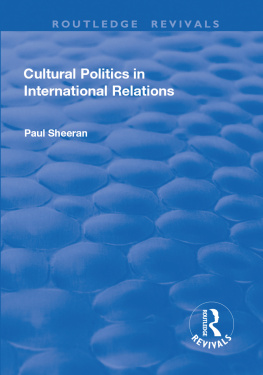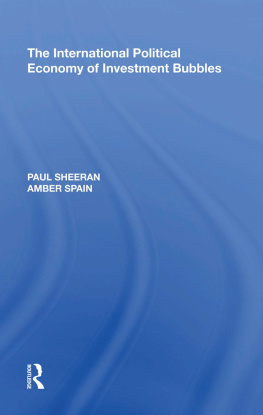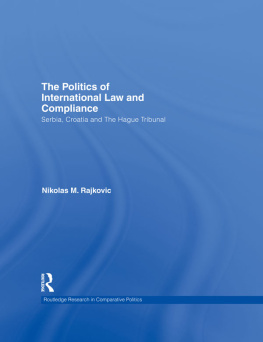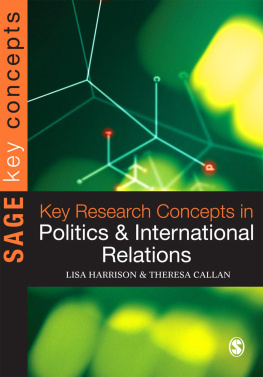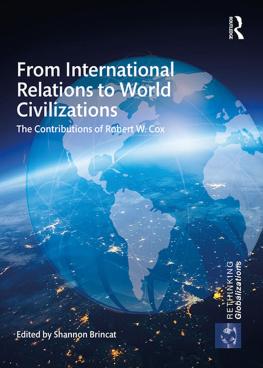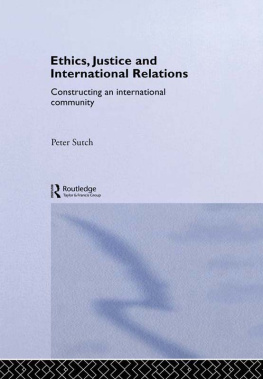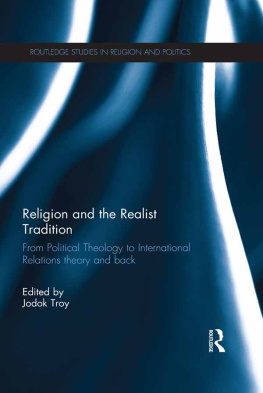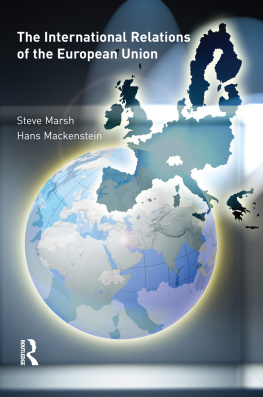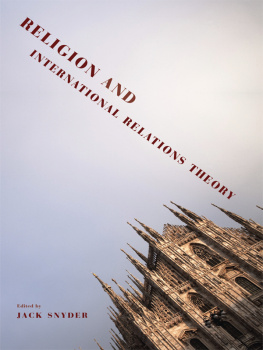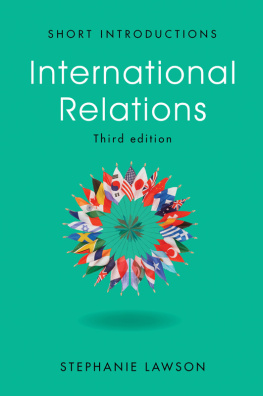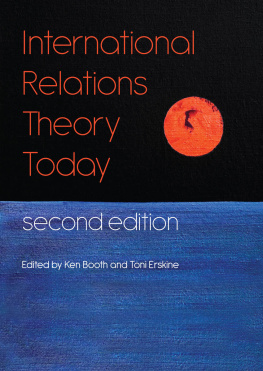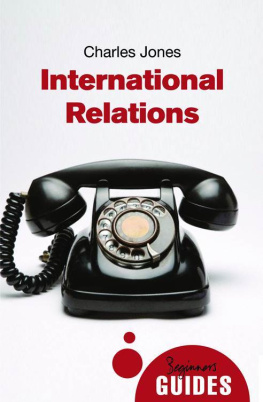First published 2001 by Ashgate Publishing
Reissued 2018 by Routledge
2 Park Square, Milton Park, Abingdon, Oxon OX14 4RN
711 Third Avenue, New York, NY 10017, USA
Routledge is an imprint of the Taylor & Francis Group, an informa business
Copyright Paul Sheeran 2001
All rights reserved. No part of this book may be reprinted or reproduced or utilised in any form or by any electronic, mechanical, or other means, now known or hereafter invented, including photocopying and recording, or in any information storage or retrieval system, without permission in writing from the publishers.
Notice:
Product or corporate names may be trademarks or registered trademarks, and are used only for identification and explanation without intent to infringe.
Publishers Note
The publisher has gone to great lengths to ensure the quality of this reprint but points out that some imperfections in the original copies may be apparent.
Disclaimer
The publisher has made every effort to trace copyright holders and welcomes correspondence from those they have been unable to contact.
A Library of Congress record exists under LC control number: 2001091562
ISBN 13: 978-1-138-72876-9 (hbk)
ISBN 13: 978-1-315-19036-5 (ebk)
Having entered the twenty-first century there is confusion as to what constitutes the content of International Relations.1 The confidence that was present in the discipline the previous century has taken flight. This is not necessarily the problem it is often perceived to be. Turbulence and storms can sweep away the inadequacy of complacency. Empowered by uncertainty, the struggle for understanding is regenerated.
The resignation of President Boris Yeltsin, on the last day of the twentieth century, as head of the Russian State, and the transfer of power to his Prime Minister, Vladimir Putin, ended the possession of figures that seemingly had a direct influence on the Soviet past.2 Lenin, Stalin, Khrushchev, Brezhnev, Andropov, Chernenko, Gorbachev and Yeltsin are effectively book-marked, the apparent constructors and de-constructors of a Soviet practice.
The story, however, despite appearances, is not concluded. The process that led to the collapse of the former Soviet Union has not been thoroughly understood. As a result, its repercussions on the vagaries of world politics have not been fully assessed. It is argued in this book that the disintegration of the former Soviet Union presents a radical point in the development of International Relations as a discipline. The work demonstrates how seemingly rigid systems can be undermined and altered by internal social pressure.
Is the content of the pages that follow strictly International Relations? At the height of the Cold War it is unlikely that material which referred to activity outside high politics (a collective expression for certain issue areas of crucial importance) would be taken seriously, let alone considered, as a guide to assessing the potential for change in the international system.3 The asking of such a question highlights the strength of islands of thought in the discipline and the dominance of entrenched positions, a condition arguably propagated by the structural realists in particular.4
The loss of authority within the community of International Relations can be traced to the loss in the stability and order between the great powers that prevailed in varying degrees in the later part of the twentieth century, a requirement imposed by the threat of nuclear annihilation. In the environment of a persistent status quo between East and West, a conflagration occurred with apparent spontaneity: the disintegration of the Soviet Union. On closer examination the cautious identification of an incremental and deliberate process seemingly reveals the existence of counter-hegemonic cultural terrorism. Circulated, or so it would appear, in the pre-Gorbachev era, through various methods, rock music included, via the gulag, the kitchen, the illegal gathering, it imploded and exploded on the international stage, destabilising the participants directly. The grand and often chaotic social Russian opera and deviation from it was not autonomous from the Soviet era, but part of it. The spiritual element embedded in Russian life was seemingly crucial in the Soviet change process, a dimension of culture rarely considered in Western analysis of Soviet Studies during the Cold War period.5
It was widely assumed by theorists and practitioners of international affairs that the established system of the Soviet Union was a permanent fixture.6 In the literature of Soviet Studies, reform and technical modifications were considered possible. The potential for widespread transformation was, however, given the uncertainties of the contemporary world politics and the need for order and security to maintain a modicum of stability, deemed unlikely by its contributors.7 The various actors who were directly involved in the Soviet change process did not however adhere to the script. The official protagonists of both East and West appeared to find themselves, along with the experts of international affairs, in the dark wood, alluded to by Dante, where the right road was wholly lost and gone.
The metamorphosis that occurred in the former Soviet Union and its effects on the discipline of International Relations are explicitly and implicitly related. The former, from its beginning, appears with the subliminal skill of the conjurer to have concealed an array of contradictions in its essence, desires and direction. The latter suggestively, but not inaccurately, consciously ignored the existence of the underlying forces prevalent within the system. In particular it ignored the cultural malignancy and the presence of coded criticism (where secrecy evades censorship to convey a countercharge against the authority responsible for the prohibition), concentrating instead on the collective capabilities and hegemonic rhetoric of the Soviet Union. In the analysis of the Soviet change process indeed, it might be said before anything else that the crises unleashed by the reformation of Soviet society themselves brought on a corresponding crises in the analysis and interpretation of Soviet society.8 In this context, the need to consider cultural politics in International Relations is obvious.
The aim of this investigation is to access the apparent failure of the discipline of International Relations to understand change in the former Soviet Union and consider the implications of subsequent change in world politics. In particular, it seems that the discipline of International Relations was limited in adequately conceptualising and acknowledging the role of globalization in the changing nature of international affairs. The development of the former Soviet Union was not adequately examined in its historical context to identify the trends and processes that fundamentally countervailed its ideological and culturally engineered social evolution.9
The initial intention of the work is to de-familiarise the narratives, or more specifically, the narrative, which sought to monitor the situation in the former Soviet Union through an examination of the Soviet political structure and key personnel within it. In the light that some events relating to the demise of the Soviet Union have arguably become the content of axiomatic reference, the need to challenge the conventional claims that, on close analysis appear limited and suspect, is pressing. In seeking to understand the generic mixture of episodes which appear, in various degrees, disguised and coded, the

